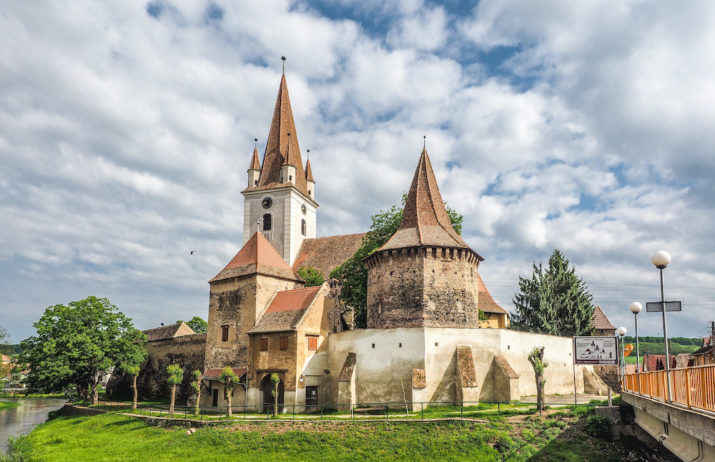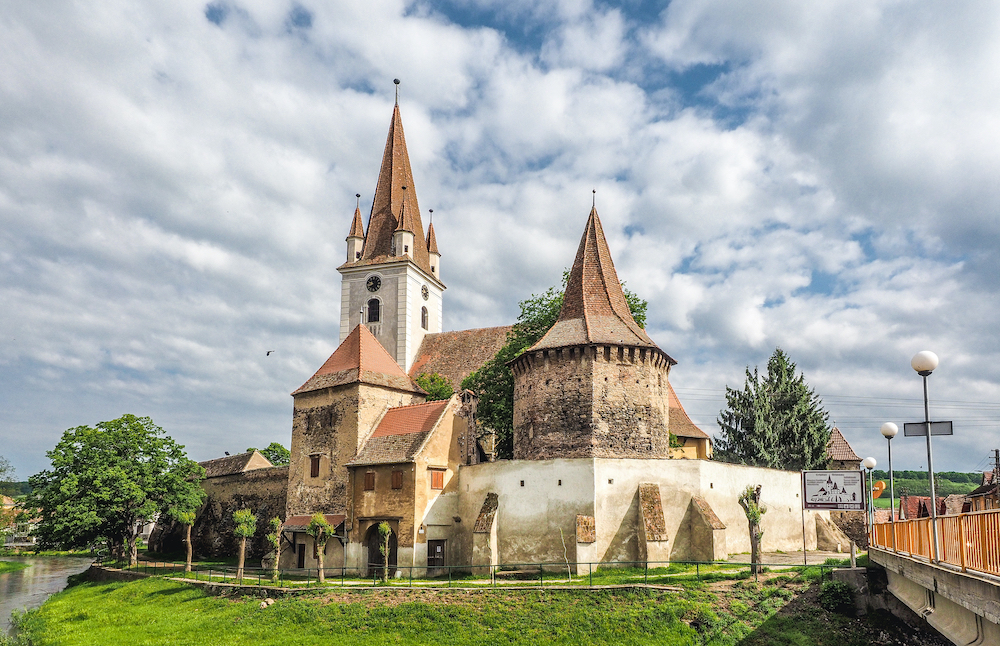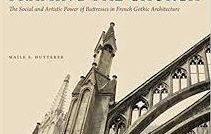

This is part of our special feature on European Art, Culture, and Politics.
Ferenc Balázs declared that his real journey commenced once he shook off the dust of a worldwide travel and decided to be a worker in a small land with his entire humanity.[1] Born in 1901 in the Transylvanian city of Kolozsvár/Cluj to the Hungarian lower middle-class as the son of a post-master and the daughter of an innkeeper, Balázs grew up in the final decades of the Austro-Hungarian Empire, but spent his adulthood as a citizen of Greater Romania.[2] Being a Unitarian minister was not Balázs’s initial preference. Rather, this choice was one of the few pathways to Hungarian-language education, minority upward mobility, and grassroots community activism in a nationalizing Romanian state. After World War I, Hungarian churches in Transylvania took on quasi-state roles in maintaining ethnic systems of education, culture, finance, economic development, and social welfare. However, schooling at the Unitarian college and later at the Unitarian Institute of Theology (1919-1923) in Cluj also provided Balázs with scholarships to pursue post-graduate degrees in theology at Manchester College, Oxford and at the Starr King School for the Ministry, Berkeley. It was this access to an international church network that ultimately allowed him to travel worldwide and re-fashion himself into a global social reformer.[3]
Much attention has been devoted to highlighting how national ideology presented the primary imperative for modern politics, state-building, and group formation, especially in the period leading to and following the collapse of the Ottoman, Austro-Hungarian, and German empires after World War I. Yet, Balázs’s efforts to reconstitute world society suggest that it is possible to historicize alternative genealogies and designs of modernity in eastern Europe, and thus document imaginaries that challenged nationhood. Indeed, Balázs reinterpreted minority concerns through the global currents of radicalism, offering a particularly rich example of the complexity and scope of interconnections with international pacifist, Protestant missionary, and anti-colonial networks.
Balázs’s utopian desire and practice records his lived experience of a set of social realities and discursive positions that scholars have come to associate with the problematic concept of (global) modernity.[4] In response to calls for “provincializing Europe” in the broader scholarly imagination, historians of modern Eastern Europe defined their position, in contrast to post-colonial approaches, as one of internal critique. Thus, they sought to de-stabilize a cleansed European paradigm by shedding light on histories of “dependency, subordination and messy struggles” shared by the continent’s western and eastern sub-regions. [5] Other studies noted the embeddedness of Eastern Europe’s imperial experience in histories of the world economy, colonialism, and nationalism or highlighted the region as a crucial laboratory for post-1945 notions of human rights and international law in order to gain further distance from Europe as a conceptual and historical frame of reference.[6] Balázs certainly capitalized on the flow of ideas and people across Protestant missionary, pacifist, and anti-colonial networks that were built along and sometimes against the connective tissues of empires—their worldwide webs of communication and travel, war, and colonial politics of difference.[7] By being embedded in such histories of connectivity, Balázs’s social reforms indicate that his global orientation was a historically produced perspective, progressive for its time, yet still abreast of residual Eurocentric representation and control.[8]
The desire for utopia
Between 1923 and 1928, Balázs observed the global scale of his historical present as he crossed the trans-imperial and colonial landscapes of Western Europe, North America, East and South Asia, and the Middle East. After he returned to Romania through the Balkans, Balázs’s contemporaries expected him to embark on a stellar career of professorship at his alma mater, the Unitarian Institute of Theology. However, Balázs “went to the village” instead, following many intellectuals worldwide in whom agrarian socialism and the anarchists’ embrace of the village commune had struck a chord again in the 1920s and 1930s.[9] As a minister in the struggling multiethnic village of Mészkő/Cheia in Transylvania, Balázs embarked on the development of the surrounding micro-region of Aranyosszék/Scaunul Arieșului. Heedless of his own poor material conditions and a debilitating tuberculosis he had contracted during the war, Balázs organized consumer-, machinery-, and dairy-cooperatives, established a center for regional economic development, and set up circles for popular enlightenment. For the new generation of intellectuals involved in the cooperative movement or those gathered around the review Transylvanian Youth, Balázs’s work in Mészkő was particularly inspiring. While he had first become known as a key theorist of post-war minority literature, it was because of his rural experiments that, upon his death in 1937, his peers elevated him into the pantheon of national heroes as an exemplary homo minoritatis.[10]
Several factors contributed to making the agrarian question particularly fundamental to post-war minority-building for the Transylvanian Hungarian youth. The region’s inclusion as a periphery first into the imperial and, after 1867, into the Hungarian national economy—both variously semi-peripheral in the global economy—prevented the capitalist transformation of the region’s agricultural production. Beginning in 1918, these effects were further amplified as Transylvania was transferred to an even more agrarian Romania—a state that pursued industrialization at the expense of peasants and ethnic minorities and was significantly affected by the global agricultural depression of the interwar years.[11] While the agrarian socialism of the post-war Transylvanian youth echoed broader trends in the east of Europe, these historical particularities lent their concerns local and temporal specificity. Thus, like other intellectuals who traveled to the west or to less customary destinations such as French Algeria, the young Balázs went abroad with a “Transylvanist gaze”—a politics of looking at the world that was structured by regional history, generational experience, and the imperatives of minority-construction at home.[12]
Yet, Balázs also distinguished himself from his Transylvanist peers, most notably, the famous writer Áron Tamási. During his brief emigration to the United States (1923-1925), Tamási had invented the witty peasant hero Ábel Szakállas, one of the enduring symbols of the “new minority man” for whom existence and work was only meaningful in the Transylvanian homeland.[13] In contrast to this inward turn, Balázs’s travelogue I Cross the World and his personal correspondence reveal the maturation of an intellectual and social reformer with an eye to the world.[14] Indeed, Balázs directly observed the radical socio-political initiatives that pacifist and anti-colonial intellectuals such as Toyohiko Kagawa (1888-1960), Rabindranath Tagore (1861-1941), and Mohandas Gandhi (1869-1948) embraced in response to the post-war crisis of global modernity. Inscribing himself into such a worldwide community of reformers, by the end of his travels Balázs insisted that his work in Transylvania was not simply for his people but for Eastern Europe, Asia, and “the West.”[15] His press publications and Under the Clod, the autobiographical account of his reforms in Mészkő, similarly revealed his pursuit of a new world society that could transcend forms of socio-economic and political structures indebted in his time to empire, colonialism, the nation-state, and post-war minority-building.[16]
The boundaries of desire
The life-cycle of Balázs’s utopia provides an opportunity to examine his struggle with modernity not only as a process of connection but also as one of social and political disruption with localized manifestations in interwar Eastern Europe. Building on the Frankfurt School of Critical Theory, recent studies propose that modern utopias, as styles of imagination and social action, surface in moments of crisis and encapsulate a socially located critical distance towards a particular historical present and a radical commitment to the exploration of alternative futures.[17] Rather than being nowhere, utopias are then quintessential manifestations of modern understandings of futurity and “progress.”
Balázs’s social dream certainly had its origins in the broader political and social turmoil that brought the utopian imagination to the fore in the early twentieth century worldwide.[18] Yet, its particular roots lay in the challenges presented by a post-war minority condition that was new to Transylvanian Hungarians and that was embedded in an international environment, which legitimized national homogenization for states across Europe.[19] While his alternative historical hypothesis evolved from his exchanges with globally-minded pacifist and anti-colonial radicals, Balázs’s efforts towards radical change ultimately ran into the boundaries of reality of his region. His utopian practice was thwarted by two factors, in particular: the pauperization and proletarianization of the peasantry as a result of the land reforms of 1921-1923, the agricultural depression of the interwar years, and the Great Depression of the 1930s; as well as the growing inter-ethnic alienation within a nationalizing Greater Romania and the growing popularity of the far right in interwar Europe.
In terms of the particular conditions in which his utopian practice emerged, matured and eventually expired, Balázs story also allows us to track the boundaries of his hermeneutic. The residual Eurocentrism and language of national authenticity in his published works revealed that there was no position of complete exteriority to ideologies of his time.[20] At the same time, the boundaries of historical reality that diminished and ultimately arrested his social reforms bring into view the limit to modernity’s susceptibility for chronic reflexivity: its totalizing drive for the structural closure of the present.[21] In this sense then, the life-cycle of his global utopia offers a case study of historical conditions that made the worldwide reconstitution of society desirable and illuminates the limits for critical distance towards modernity in interwar Eastern Europe.
The education of desire
Balázs’s case draws attention to the global genealogies and horizons that underlay radical efforts for social transformation in eastern Europe. He was not a complete outlier among his contemporaries. As (post)imperial subjects of the Ottoman and Habsburg empires, some radical thinkers consumed Asian forms of spirituality and reinvented religious belief, nutrition and somatic practices in an effort to perfect society. Inspired among others by Buddhist philosophy, the Bulgarian Peter Konstantin Deunov (1867-1944) founded the mystical community Universal White Brotherhood in order to work for the spiritual reconstitution of the world.[22] The Hungarian Béla Bicsérdy (1872-1951) intertwined Zoroaster’s Zend Avesta with social Darwinism and knowledge on medicine, nature cure, and nutrition to develop his own regimen of vegetarian nutrition, physical exercise, and sexual abstinence. His efforts to counteract what he saw as the degenerative effects of modern life style garnered thousands of followers who renounced traditional food consumption and established several Bicsérdist associations and colonies in Hungary and Romania.[23] Other intellectuals challenged Euro-centric regimes of knowledge as scholars. Here, one may single out the historian of religions Mircea Eliade (1907-1986) who, after his “discovery of a pre-Aryan India,” re-interpreted Romanian and southeast European identity as part of a mythical spiritual Orient, separate from the occidental world. Because of his desire to “save the modern world through archaic utopias”—to rejuvenate society through a proto-historic “cosmic Christianity”—he not only exerted a great influence on the Romanian far right but became an important participant in the debates around nationhood and modernity in the 1930s.[24] Regardless of the capacity in which they were active, these thinkers experienced the social and political upheavals of the late nineteenth and early twentieth century from a particular historical and cultural location. In response, they examined cultural traditions and ideas beyond Europe for their criticism of modernity and embraced as a result political, cultural and social affinities that in various ways pressed against Euro-centric social and ideological regimes in their world.
In this sense, one might say that Balázs’s most enduring legacy was to “educate desire.”[25] Rather than fictional depictions of, or aspirations towards a perfect society, his writings and practices constituted influential public interventions that asserted a different set of values based on which he called his audience to perceive the world they inhabited as a perfectible environment in which imaginaries of empire, capitalism, and nationhood could be overcome. In this way, Balázs opened up spaces of contestation and resistance to the local and global social and ideological order in which he was active, retrieved possibilities for historical divergence for his audience, and aspired to teach individuals how to become historical actors and global subjects. This cultural pedagogy explains why, despite his failure to implement a durable utopian experiment, his legacy was valued in critical thought by leftist Hungarian minority intellectuals who questioned interwar fascism and the Romanian state socialist project under Nicolae Ceaușescu (1965-1989).[26]
Zsuzsánna Magdó is Associate Director at the University of Pittsburgh’s Center for Russian, East European, and Eurasian Studies where she directs regional studies programs to support interdisciplinary scholarship and public education on the world regions of Central and Eastern Europe, Russia, and Central Eurasia. A native of Transylvania, she received her Ph.D. in History from the University of Illinois in Urbana-Champaign before joining Pitt. Dr. Magdó has published articles in edited collections, most recently “Romanian Spirituality in Ceaușescu’s Golden Epoch: Social Scientists Reconsider Atheism, Religion, and Ritual Culture,” in Paul Betts and Stephen A. Smith, eds., Science, Religion, and Communism in Cold War Europe (London: Palgrave, April 2016).
References:
[1] Ferenc Balázs, A rög alatt (3rd ed., Budapest: Magyar Élet Kiadása, 1944), 5-6. Bejárom a kerek világot (Cluj: Lapkiadó R.T., 1929), 6.
[2] For the first mention of a place in Transylvania, this article adopts a dual Hungarian/Romanian designation. Subsequently, place names will be mentioned in Romanian, except for citing publications in Hungarian below.
[3] Studies on Balázs are available exclusively in Hungarian. Imre Mikó, Antal Kicsi and Ferenc Sz. Horváth, Balázs Ferenc monográfia (Bucharest, 1983). Mihály Sztranyiczki, ed. Szép apostoli élet: Balázs Ferenc centenárium (Kolozsvár, 2001). Ferenc Hatházy, ed. Balázs Ferenc emlékkönyv(Kolozsvár, 1997).
[4] For a recent debate see the roundtable “Historians and the Question of “Modernity”,” American Historical Review 116, no. 3 (06, 2011), 631-637. While acknowledging that it is a contentious yet unavoidable shorthand for a complex historical process, I use “modernity” in a general sense to refer to a set of subjectivities, cultural trends, and socio-economic and political institutions that acquired world-historical impact beginning the long nineteenth century. Although it is often used interchangeably with modernism, for the purposes of this article, I distinguish the two. I reserve the latter – (aesthetic) modernism – for discussing the radical projects of artistic innovation that to varying degrees embraced or criticized these new historical trends.
[5] Although the clearest articulation of this position belongs to Maria Todorova, “Balkanism and Postcolonialism: Or the Beauty of the Airplane View” in Marx’s Shadows: Knowledge, Power and Intellectuals in Eastern Europe and Russia, ed. Costica Bradatan and Serguei Oushakine (Plymouth, Eng.: Lexington Books, 2010), 175-196, recent histories of eastern Europe share these broad concerns. See the recent cluster edited by Norman Naimark and Timothy Snyder “Writing Eastern Europe as Europe,” East European Politics and Societies 25, no. 4 (November 2011).
[6] Alison Fleig Frank, “Continental and Maritime Empires in an Age of Global Commerce,” East European Politics and Societies 25, no. 4 (November 2011), 780. Tara Zahra, “Going West,” East European Politics and Societies 25, no. 4 (November 2011), 788.
[7] Dana Lee Robert, Introduction to Converting Colonialism: Visions and Realities in Mission History, 1700-1914 ed. Dana Lee Robert (Grand Rapids, MI: Eerdmans, 2008), 1-20. Patricia Applebaum, Kingdom to Commune: Protestant Pacifist Culture between World War I and the Vietnam Era (Chapel Hill: University of North Carolina, 2009), 25-44. On how European and American empires managed and connected spaces and populations globally, see Tony Ballantyne and Antoinette Burton, A World Connecting, 1870-1945, ed. Emily S. Rosenberg (Cambridge, Mass.: Harvard University Press, 2012), 285-434.
[8] Felipe Fernández-Armesto and Benjamin Sacks, “Networks, Interactions and Connective History,” Companion to World History, ed. Douglas Northrop (West Sussex, Eng.: Wiley-Blackwell, 2012), 303-320. On the global as a historically instituted perspective with its own promises and troubles, see Sanjay Krishan, Reading the Global: Troubling Perspectives on Britain’s Empire in Asia (New York: Columbia University Press, 2007), 4-5.
[9] Tom Brass, Peasants, Populism and Postmodernism: The Return of the Agrarian Myth (New York: Routledge 2000), 10. Peter Marshall, Demanding the Impossible: A History of Anarchism (Oakland, CA: PM Press, 2008), 309-338.
[10] One of the first intellectuals responsible for Balázs’s apotheosis was Áron Tamási, the influential populist writer. Áron Tamási, “Balázs Ferenc: búcsú a mészkői sírnál,” Erdélyi Helikon 10, no. 6 (June 1937), 393.
[11] Katherine Verdery, Transylvanian Villagers: Three Centuries of Political, Economic, and Ethnic Change, 1700-1980 (Berkeley: University of California Press, 1983).
[12] Nándor Bárdi, Otthon és haza: Tanulmányok a romániai magyar kisebbség történetéről (Miercurea Ciuc: Pro Print Könyvkiadó, 2013), 471-495. The literary historian and critic Elemér Jancsó travelled in North-Africa and Finland after finishing his studies in Paris. It was mainly Unitarian students who left for the United States – László Lőrinczi (1898-1981) and Sándor Szent-Iványi (1902-1983), both of whom were Balázs’s close friends.
[13] Áron Tamási, Ábel Amerikában (Cluj: Erdélyi Szépmives Céh, 1934), 128.
[14] Balázs, Bejárom a kerek világot. His main correspondence with Christine Frederiksen, his later wife, appeared in the collection Csillagokhoz kötöttük szekerünk: Balázs Ferenc levelei Christine Frederiksenhez, ed. Júlia Vallasek (Cluj, 2001).
[15] Balázs’s letter to Christine from Miskolc, Hungary dated 1 April 1936, Csillagokhoz, 237. Balázs, Bejárom, 78, 239. When using “the East,” “the West,” “Eastern” and “Western” I reiterate Balázs’s terms, while being aware that these constitute arbitrary cultural and political constructs.
[16] Balázs, A rög alatt. Balázs’s articles about rural social reform appeared in Transylvanian Youth (Erdélyi Fiatalok), Transylvanian Helicon(Erdélyi Helikon), Aranyosszék and the Marxist Our Age (Korunk).
[17] “Introduction: Utopia/Dystopia Beyond Space and Time,” in Utopia/Dystopia: Conditions of Historical Possibility, ed. Michael D. Gordin, Helen Tilley and Gyan Prakash (Princeton: Princeton University Press, 2010).
[18] Lyman Tower Sargent, Utopianism (Oxford, Eng.: Oxford University Press, 2010), 10.
[19] Philipp Ther, The Dark Side of Nation-States: Ethnic Cleansing in Modern Europe (New York: Berghahn Books, 2014), 281.
[20] For example, despite his enthusiasm for Kagawa’s and Tagore’s reform efforts, Balázs’s arrival to Tokyo marked the deployment of imperial and colonial hierarchies of race, gender, and civilization. Thus, the Japanese were less developed in evolutionary terms than “the Western human type,” which explained for him the patriarchal enslavement of women in the family, the sexual liberties enjoyed by men, and why only the most illustrious Japanese were capable to practice “intelligent science and valuable arts.” Balázs, Bejárom, 251. In fact, once in the “East,” Balázs naturalized time “as a neutral grid in which to record the progress of human history.” Dipesh Chakrabarty, “The Time of History and the Times of Gods” in The Politics of Culture in the Shadow of Capital, ed. Lisa Lowe and David Lloyd (Durham, 1997), 36-37. Thus, by adopting this historicist conception of temporality, he banished Asia into a chronic allachronism, into another time which lay always behind his normative “West.”
[21] Anthony Giddens, Modernity and Self-Identity: Self and Society in the Late Modern Age (Cambridge, Eng.: Polity Press, 1991). Fredric Jameson, “Utopia as a Method, or the Uses of the Future,” in Utopia/Dystopia, ed. Michael D. Gordin et al., 21-44.
[22] Petra Ramet, Social Currents in Eastern Europe (2nd ed., Durham: Duke University Press, 1995), 170. Deunov’s mysticism inspired a worldwide movement by the 1960s and was influential in the ideological reorientation of late socialist Bulgaria under Lyudmila Zhivkova, the Minister of Culture and daughter of the party leader Dimitry Zhivkov, towards an occult spirituality and socialist culture. I thank Veneta Ivanova and Maria Todorova for sharing this insight.
[23] Béla Bicsérdy, Az élet könyve és gondolaterők hatalma, vol. 1-8 (Budapest: Magyar Ilona Kiadása, 1994-2004).
[24] Florin Turcanu, “Southeast Europe and the Idea of History of Religions in Mircea Eliade,” in Hermeneutics, Politics and the History of Religions: the Contested Legacies of Joachim Wach and Mircea Eliade, ed. Christian K. Wedemeyer and Wendy Doniger (Oxford: Oxford University Press, 2010), 254-255. Roland Clark, “Nationalism, Ethnotheology, and Mysticism in Interwar Romania,” Carl Beck Papers no. 2002 (September 2009), 21.
[25] The concept belongs to Ruth Levitas, The Concept of Utopia (Bern: Peter Lang, 2010), 123-150.
[26] According to Christine, Under the Clod was at the height of its popularity during the war in circles opposing Hitler, which the book’s re-edition in 1939 and in 1944 by two Budapest presses, MUFOSZ and Magyar Élet, seems to substantiate. Frederiksen, Alabaster Village: Our Years in Transylvania (Boston: Skinner House Books, 1997), 129. Following Hungarian intellectuals’ estrangement from Ceaușescu’s national communism, Balázs was one of the interwar figures that the Marxist Ernő Gáll, the editor of Our Age (Korunk), and his circle (mostly intellectuals from the interwar generation like Imre Mikó and Edgár Balogh) re-introduced to public memory and simultaneously sought to re-envision minority-building amidst conditions of a failed socialist internationalism. The bibliography appended to Mikó, Kicsi, and Horváth, Balázs Ferenc monográfia, 283-286 is a good indication for Balázs’s revival. I thank Nándor Bárdi at the Hungarian Academy of Sciences for drawing my attention to the role of Gáll and his circle.
Photo: Fortified catholic church in Cristian Sibiu Romania. UNESCO heritage site and important touristic attraction | Shutterstock
Published on April 28, 2020.




